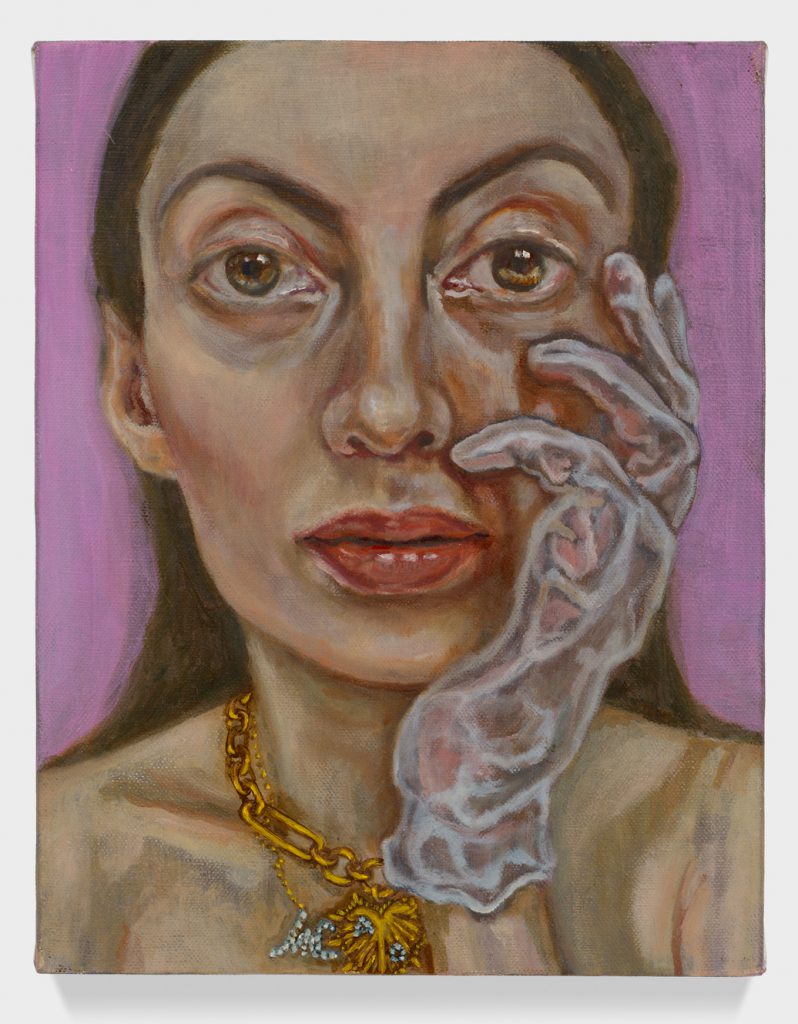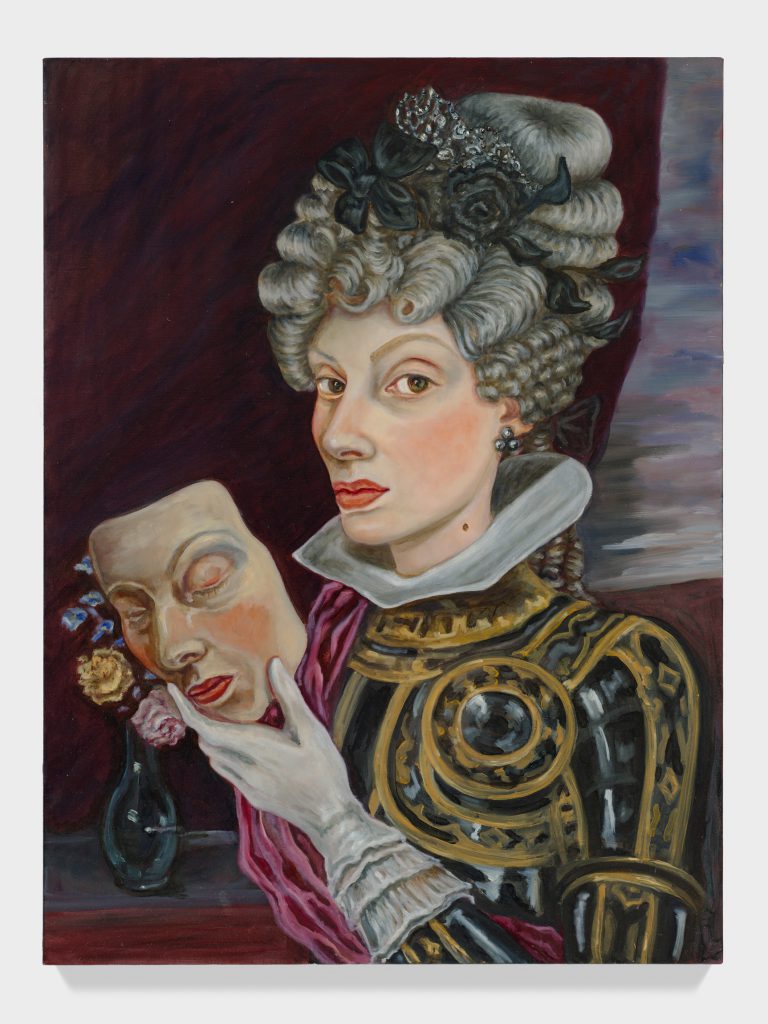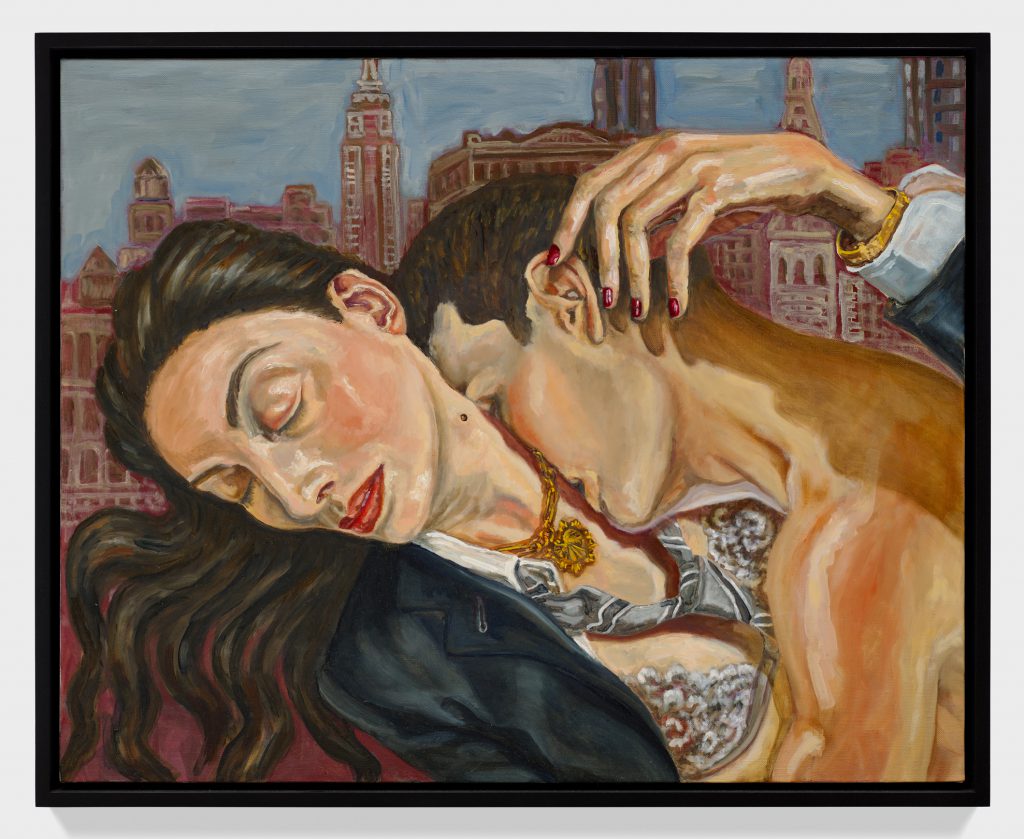
Anh Duong at Galerie Gmurzynska, through May 31
In this exhibition, Anh Duong presents 20 striking paintings, spanning over three decades. Born to a Spanish father and a Vietnamese mother, Duong was raised in France, and initially trained as a classical ballerina, before being catapulted into the limelight of high-fashion modeling and movie acting. In 1988, the artist changed course, moved to New York, and devoted herself to painting. Initially, she produced still lifes, landscapes, and portraits rendered in oil on canvas. Her large-scale portraits, primarily of women—sometimes friends and celebrities such as Susan Sarandon and Anjelica Huston—are depicted in stylized, frontal poses and painted in her signature expressionist style. Delineated through figural distortions and subtly exaggerated features, Duong’s solitary sitters are animated through contrasting ranges of vibrant and muted swaths of color, arranged in virtuosic orchestrations of marks, streaks, and wide, soft brushstrokes. Eventually, she focused on an ongoing series of large-scale self-portraits begun in the early aughts.

Dressed in haute couture or in extravagant lingerie, she situates herself against theatrical backdrops and natural environments: in the sea, the beach behind her punctuated by parasols and sunbathers; on a bike riding along a forested lane. In other portraits she is nude, exposing herself completely, or in a bathtub; alongside a dog, or wrapped around a teddy bear. Her flesh appears in muted shades and highlights of creamy whites and earth tones while her body is limned by the luminous opalescent contours of her body. All of these self-portraits are deeply interconnected; all share a direct, unflinching gaze that emanates from their large riveting eyes rimmed by irregular shadowy edges that engages the viewer. Yet, neither confrontation nor the male gaze come into play. Instead, men are shut out of the picture.

One of her most recent compositions from 2022, titled The Gentlewoman or the Aggravation of our Incoherences, underscores this turning point, and is the only double portrait in this show: a close-up view of the artist with a gorgeous male lover in an impassioned embrace, seemingly reclining on a divan. His naked torso is stretched over her as he kisses the nape of her neck. Duong’s face is turned toward us, while her eyes are seen for the first time, completely closed and in rapture as her hand languidly dangles over his ear. She wears a jacket, collared shirt, and tie (maybe his?) that partially covers a gold medallion necklace and a lace corset. Behind them, outside the window, serenity is invoked from a series of pre-war buildings tinged in mauve, silhouetted against twilight’s darkening azure sky, and streaked with grey clouds. Although this composition singularly evokes the fusional love of Edvard Munch’s The Kiss by the Window—as a man and woman coalesce into single undulating form—here, instead, Duong solidifies her own sense of identity by rendering her body with abandon and desire.